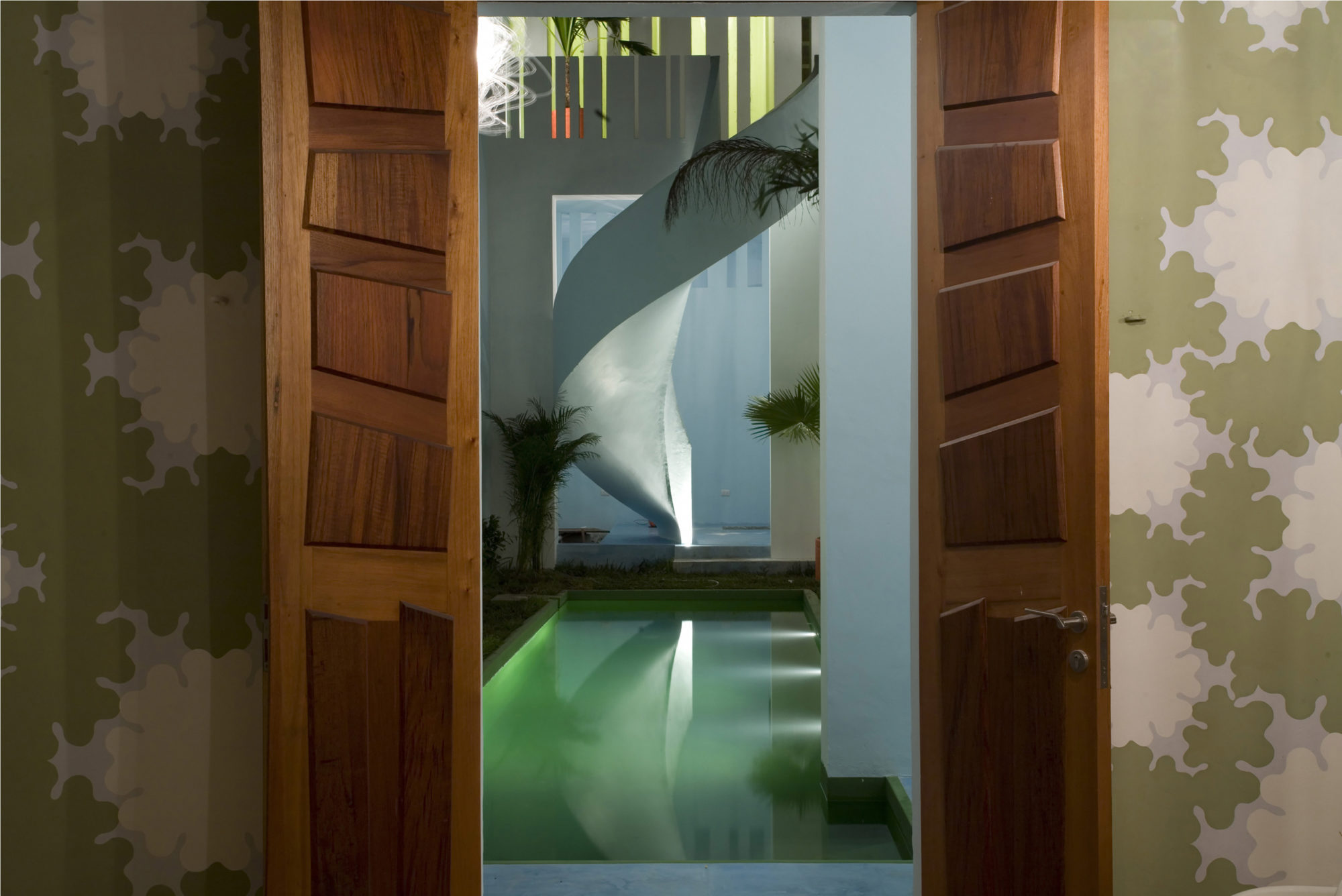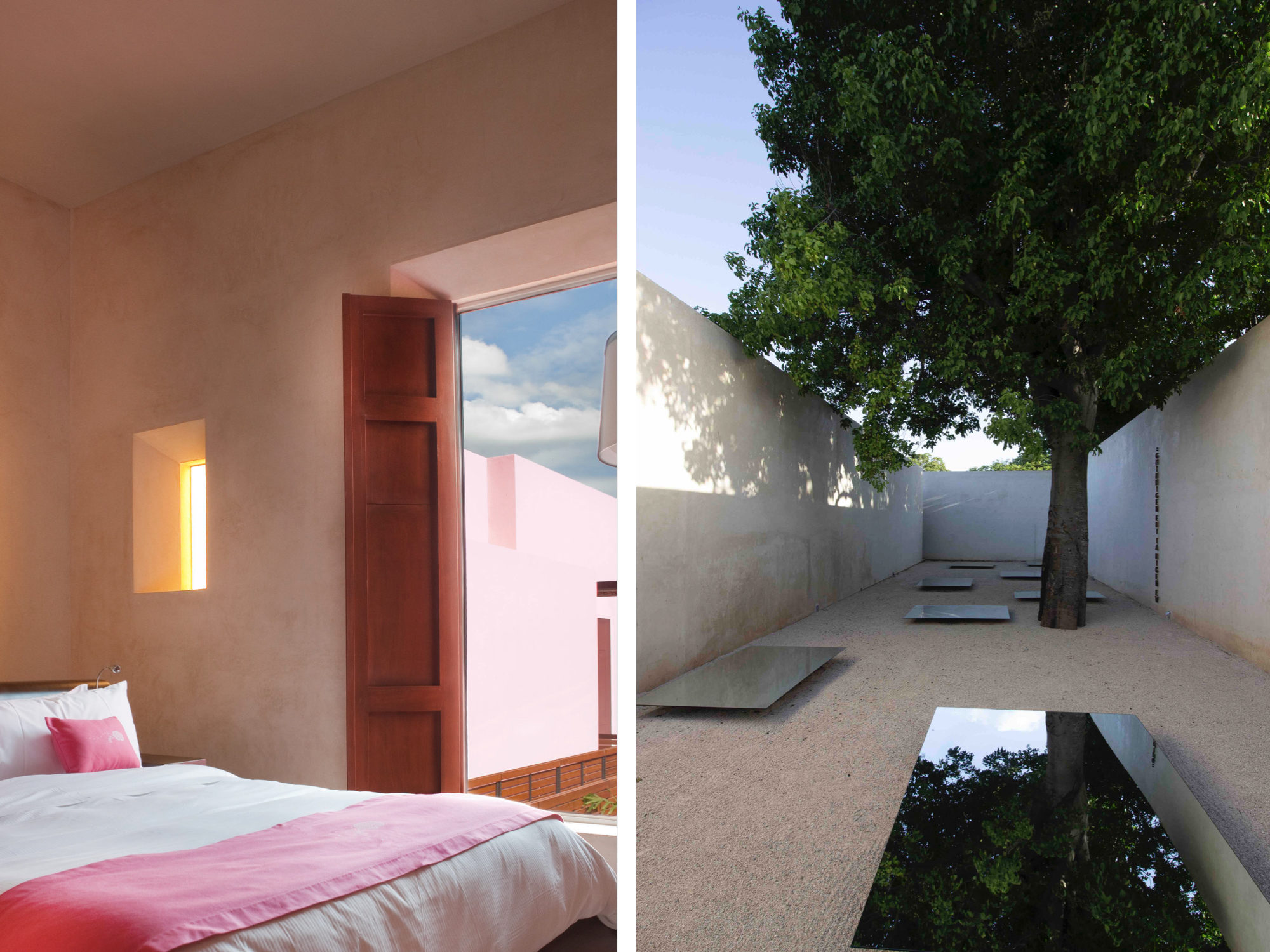“Sunny people and weird expats,” says Jorge Pardo when asked to describe his fellow residents of Mérida, Mexico. The Cuban-American artist has lived in the colonial Yucatán capital for 20 years, ever since he first visited on his honeymoon. “Mérida is still here, the wife is gone,” he jokes.
Pardo is one of the cultural world’s most colorful characters, both in personality and craft. As an artist, he’s known for his ability to transform ordinary things into kaleidoscopic objects of desire. In his hands, a chandelier resembles a fragment of a coral reef; a credenza doubles as a painting. This past year, he channeled his talents into creating L’Arlatan, art patron Maja Hoffman’s eye-popping boutique hotel in Arles, France. In typical fashion, Pardo transformed the aging 15th-century palace into an artwork in its own right, using doors as canvases for his original paintings and festooning the interiors in vibrantly patterned tiles sourced from the Yucatán.
While Pardo, who also splits his time in New York, is often on the road showing work in gallery and museum exhibitions, he always enjoys returning to Mérida. “There’s a very pleasant deadness to this place,” he says, citing the undeveloped art scene as one of the city’s biggest draws. Sporting his signature look of unruly gray halfro, scruffy beard, and flip- flops, Pardo spends his low-key days working in his studio, fishing in a boat he built from scratch, and cooking in the botanical environs of his sprawling home, a formerly derelict compound he transformed into an oasis of wild gardens and mango trees. Life in the tropics, he admits, is pretty sweet. “It’s nice to come home to a place that operates at a different pace, to work in a more chilled-out environment. It’s always warm here. It’s a town that’s stuck in the ’70s—there’s only a handful of things to do and for me, that’s more than enough.”


